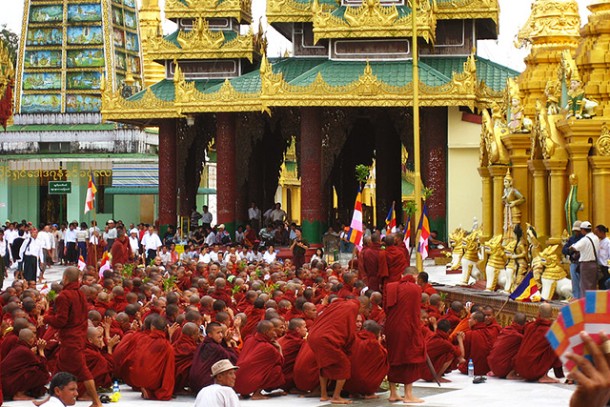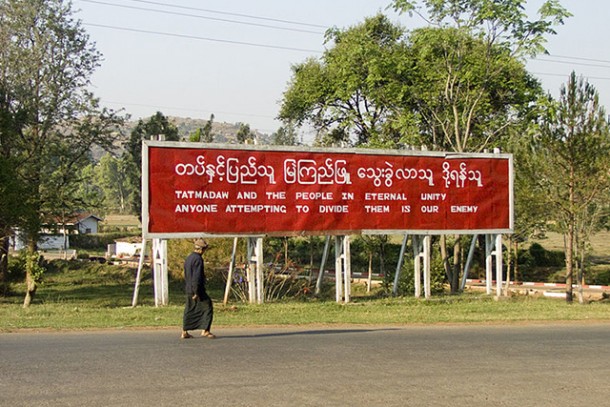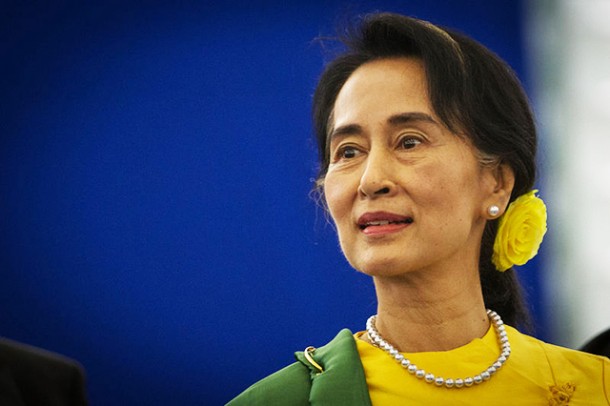Myanmar may be the most complex country on the Earth, perhaps the furthest from being called “land of freedom”. Let’s think about its 135 different ethnies officially recognized, clustered in just eight “major national ethnic races”. The Burmese Administrative partition is another symptom of their love for simplicity, considered the twenty-one administrative subdivisions (none of which is a subpart of another), as:
- 7 States;
- 7 Regions;
- 5 Self-Administered Zone;
- 1 Self-Administered Division;
- 1 Union Territory, where lies the capital, Naypyidaw.
In this governmental tangle, on the next 8th of November, there are going to be held General elections. Of course, these are going to be far from being simple, especially considered what has been the thorny history of this nation, one of the least developed countries in the world. Let’s try to recap, in order to reach, by essential steps, what is the situation nowadays.
A History of Violence
- 1948: the 4th of January, Myanmar (former Burma) celebrates its independence from the British Empire, which, during the 19th century, the three Anglo-Burmese Wars have been fought with;
- 1962: coup d’état by military commander Ne Win, with the beginnings of socialist rule and the political dominance of the army. The ruling Burma Socialist Programme Party also imposed the martial law until 1974;
- 1988: year of 8888 Nationwide Popular Pro-Democracy Protests, which, indeed, began on the 8th of August. Ignited by monks, students and ordinary people, it was repressed in a bloodbath. The uprising ended on the 18th of September, after another military coup, this time by the State Law and Order Restoration Council (SLORC), with ruling General Saw Maung and “more Draconian measures than Ne Win had imposed”. During the crisis, Aung San Suu Kyi emerged as a national icon;
- 1990: multiparty elections in May, in which the National League for Democracy (NLD), Aung San Suu Kyi’ s party, won 392 out of a total 492 seats, about the 80%. Unfortunately, the military junta simply refused to cede power, and continued to rule the nation as SLORC until 1997, and then as the State Peace and Development Council (SPDC), also putting Aung San Suu Kyi under house arrest;
- 2008: Cyclone Nargis: 200,000 people dead or missing, 1 million displaced. When it rains, it pours. But also a constitutional referendum, which led to a new Constitution of Myanmar, the seed of a “discipline-flourishing democracy”;
- 2012: by- elections called to fill 46 vacant seats in Parliament. NLD leader Aung San Suu Kyi ran in the seat of Kawhmu, which her party won in 43 of the 44 seats they contested, with Aung San Suu Kyi becoming a member of Parliament.
- 1948-2015: one of the world’s longest ongoing civil wars, which began right after the independence in 1948. Successive central governments of Myanmar have fought, and repressed, a myriad of ethnic and political rebellions.
The incoming 2015 General Elections
A total of 91 political parties and roughly 6,074 candidates will compete in almost 1,200 constituencies, including for the 498 elected seats in the national legislature elected by voters (75% of the total seats). The remaining 166 seats (25%) are appointed, under the 2008 Constitution, by the commander-in-chief of the Armed Forces, the Tatmadaw. The weight of the Army is well expressed by the ratio military-expenditure/GDP: 3.73 in one of the poorest countries worldwide, against, for example, the USA’ s 3.5.
Other facts on the verge of the elections:
- Any candidate is barred from the office of President, under the disqualification of those who have a spouse or children who are foreign citizens. As, to mention one, Aung San Suu Kyi (two children from her British husband dead in 1998);
- Yesterday, the 23th of September, the 400 hectares Zone A, of the joint Japanese-Myanmar SEC (Special Economic Zone) in Thanlyin, opened. The $1.5 billion SEZ project is a manufacturing complex, designed to lure investment and help the country compete in the global marketplace. Perhaps, it also feeds the promises President Thein Sein made to the electorate hungry for jobs that some of the development pledged for Myanmar is going forward.
- Armed ethnic rebels, as in eastern Myanmar’s Shan State, are warning political parties to halt the elections amid ongoing clashes.
Furthermore, a recent survey of the Asian Foundation titled “Myanmar 2014: Civic Knowledge and Values in a Changing Society” highlighted that, out over 3,000 surveyed in all 14 regions/states:
- 82% could not name any branch of the government;
- 76% don’t know which institution passes bills into law;
- 44% believe the President is elected directly by people, while only 12% correctly knows it is nominated by the Assembly of the Union, the national-level bicameral legislature of Myanmar.
To fill this and other gaps coming out of the survey, they launched the praisworthy initiative MaePaySoh Hack Challenge, a competition to create mobile and web applications that are fun, user-friendly, and full of essential information for voters about the general elections.
It’s never going to be late for changes in Myanmar.





